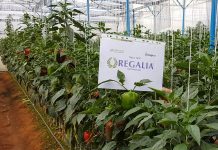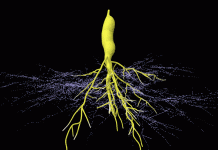By Ed Hamrick
![320px-Schrotthaufen_Berlin[1].jpg](http://www.altenergystocks.com/wp-content/uploads/2017/08/320px_Schrotthaufen_Berlin_1_.jpg) Municipal solid waste in Berlin. Photo by S. Müller via Wikimedia Commons |
Remember the one about the two guys in the woods who are seen by a hungry bear?
They start running from the bear, and one guy says to the other guy “Why are we running? Everyone knows you can’t outrun a bear”. The other guy says “I don’t need to outrun the bear, I only need to outrun you”.
Any company can find a market for their ethanol if they can make ethanol much cheaper than the corn ethanol companies in the US or much cheaper than the sugar cane companies in Brazil. If a company carefully counts pennies, carefully uses energy, carefully uses water and finds a cooperation model with incumbents in the MSW market, then it can be quite profitable.
The global MSW market
There are more than two billion tons of MSW produced worldwide every year, with more than 250 million tons per year produced in the USA every year. Disposal of MSW is a thousand year old industry and there’s an efficient and well-established system for collecting it, transporting it and disposing of it. There’s a steady supply of MSW year-round. People pay money for disposing of their MSW. On the surface it looks easy – get a municipality to pay you to take the MSW, make ethanol from it, and pay someone to put what’s left over into their waste dump. It’s not that simple.
The most valuable fraction of MSW is waste paper, comprising up to 40% of MSW in developed countries but only 5% in developing countries. But new Kraft paper pulp costs $800 per ton. Another significant fraction of MSW is food waste, comprising up 20% of the MSW in developed countries and up to 60% in developing countries.
Note that Kraft paper and food waste that haven’t been pulped aren’t good biofuels feedstocks. The wood fibers in paper form a strong mesh of 5 to 50 layers, covered in coatings. Together, this prevents enzymes from accessing the cellulose. Unpulped food waste isn’t a good feedstock either – that’s why we first boil food and then chew it – to form a pulp that enzymes in the body can convert to sugars.
It isn’t difficult to get paper pulp and food pulp from MSW – but it’s very difficult to do this cost-effectively for two reasons: the microorganisms in MSW and the physics of water.
Food waste is ideal for microorganisms – they thrive on the sugar and starch in food waste, and the longer the waste sits in garbage cans or in bags on the curb, the more these microorganisms grow (exponentially). Decomposing food waste stinks and is full of dangerous pathogens, so people want it to be disposed of far from where they live. Where population densities are low, it’s easy to find a ravine to dump it into – this is how MSW has been disposed of for millenia.
Where population densities are high, it needs to be transported to where people don’t live. Even the world’s largest country, Russia, has a severe MSW problem in its large cities because it’s expensive to transport MSW far away to where there’s empty land and because existing waste dumps near the large cities are filling up. Russia has immense expanses of empty land suitable for landfills, but it’s very expensive to transport millions of tons of MSW to this empty land. Garbage trucks don’t get good gas mileage, and it’s expensive to transport MSW long distances.
Why not incinerate MSW?
![Movinggrate[1].jpg](http://www.altenergystocks.com/wp-content/uploads/2017/08/Movinggrate_1_.jpg) Municipal solid waste during combustion in a moving grate incinerator. Public domain photo by Ole Poulsen via Wikimedia Commons |
The first thing that comes to mind for solving this problem is “Ok, let’s just burn it and then truck the ashes out of town”. There’s one big problem – food waste is wet and is 80% water. The physics of water are unyielding – it’s very expensive to cause water to go from liquid water to water vapor. It costs about $5 per ton of water to heat water to boiling, and another $15 per ton of water to make water go from a liquid to water vapor, so it’s expensive to burn something that’s wet. The paper and plastics in MSW burn nicely, but the wet food waste uses up a lot of the energy you get from burning mixed MSW.
No sane person would buy MSW to make money from burning it – but it is a way to get rid of the MSW, albeit inefficiently. The other problem with burning MSW is that it gives off toxins, and these toxins are costly to scrub. Plastics burn efficiently, but there’s a small fraction of PVC (polyvinyl chloride) which is toxic when burned. MSW also contains batteries, and these give off heavy metals when burned. To solve this, people want incinerators to be located far, far away from where their children play, but then there’s again the problem of the cost of transporting the waste.
So the technical challenge of making biofuels from MSW is to make biofuels in populated areas without creating an environmental nuisance. Germany is a densely populated country and uses either incineration with stringent environmental scrubbing or anaerobic digestion with odor removal equipment and subsequent disposal of the digestate.
Why not make power?
Toronto, Canada has people put their food waste and other organics in blue bags which get picked up every two weeks, get pulped using BTA pulpers, and processed with anaerobic digestion. However, neither incineration nor anaerobic digestion are a way to make a profit – they both run at a loss. Incineration gets rid of MSW, but the money from selling the electricity it produces is less than the cost of doing the incineration and scrubbing the gasses. Toronto pays millions of dollars every year to dispose of their organic wastes with anaerobic digestion. Anaerobic digestion produces 50% methane and 50% carbon dioxide, but it’s expensive to convert this to pure methane. Even if the methane is purified, nobody will pay enough for the methane to pay for cleaning it.
Burning the methane/CO2 mixture can produce electricity, but Canada won’t pay subsidies for this electricity and it’s more expensive to produce this electricity than to make electricity from natural gas.
What about anaerobic digesters?
The next thing that comes to mind is “Ok, let’s incinerate the MSW or use anaerobic digestion, and find a municipality that will pay us enough to make a net profit.”. This is what fueled the solar industry – governments promised subsidies, people bought expensive solar panels, and then then governments stopped the subsidies. Italians, Spaniards, and others have found themselves saddled with years of payments for their solar panels without getting the subsidies promised them. No rational company depends on subsidies for their future profits, since these subsidies can (and do) go away.
So, what’s the solution?
So what’s the solution to profitably making biofuels from MSW? A solution needs to be located in neighborhoods where the existing transfer stations are located. This minimizes transportation costs and re-uses existing waste collection infrastructure. When the wind blows, the smell can’t annoy the neighbors. It has to be profitable without subsidies, since subsidies can (and do) go away. It can’t emit any toxins into the environment – it has to be something that people won’t object to when it’s located near where their children play. It can’t dump dirty water into the sewers – this is expensive.
The physics of water are at
the root of a solution – using hot (but not boiling) water to simultaneously kill microorganisms, pulp food waste and pulp waste paper. Microorganisms die when heated in water at 70 C (158 F) for 30 minutes. When the microorganisms die, the waste stops giving off odors. However, heating MSW above 70 C gives off a strong stench (hence the saying “a steaming pile of garbage”). Boiling water is expensive, so a solution needs to heat the MSW to between 70 C and 95 C while concentrating the odors so they can be put through an odor removal system. Food waste softens at 85 C and above (the pectin is loosened) – drop an uncooked potato on the ground and a cooked potato on the ground to see how the former bounces and the latter pulps. Paper forms a pulp when subjected to shear forces, and this is most efficient above 60 C (140 F).
![320px-Pulper[1].jpg](http://www.altenergystocks.com/wp-content/uploads/2017/08/320px_Pulper_1_.jpg) Pulper. Public domain photo by Patxi Aguado via Wikimedia Commons |
The most cost-effective way to pulp waste paper is using a drum pulper, similar to the Metso OptiSlush or the Andritz (ADRZF) Fibreflow drum pulpers. A drum pulper is a large rotating drum, usually at least 2.4 m (8 feet) in diameter and at least 20 m (65 feet) long. These are used all over the world to take waste paper, add water, and lift and drop the wet waste paper at more than 10 revolutions per minute. This lifting and dropping causes shear forces that separate the wood fibers from the wet paper. Using a drum pulper, it costs about 10 kWh to pulp a ton of waste paper, which costs about $0.80 per ton of waste paper at $0.08 per kWh.
A drum pulper will also pulp food waste using these same shear forces, if the food waste is first heated to 85 C (185 F). A temperature of 85 C will also kill all the microorganisms in MSW. Heating MSW from 25 C (77 F) to 85 C costs about $5 per ton, and rotating the drum pulper for an hour will cost another $2 per ton. Separating the pulped paper and food waste from the inorganic fraction will cost another $1 per ton (using a trommel screen and a dewatering device).
Our solution for separating carbohydrates from MSW is based on this idea. MSW is pulped with process water in a heated drum pulper at high consistency transforming the food waste and waste paper to a pulp. This pulp contains sugar and starch from food waste and paper fibers from waste paper. A screen with additional process water separates clean recyclables from the pulp. A hydropulper removes sand, grit and glass fragments from the pulp. A dewatering device separates paper fibers from the pulp. The remaining pulp is added to the process water. The process water is treated with alpha-amylase enzymes to convert starch to sugar. The overflow of the process water is a sugar and starch solution that reaches an equilibrium concentration. No water is added in this process and commercially available drum pulpers, screens, hydropulpers and dewatering equipment can be used.
This produces three fractions from the MSW. The clean fraction with plastics, metals, glass and other inorganics can be separated using a materials recycling facility (MRF) to get some value from recyclables. The sugar-water fraction and the paper fiber fraction can be used together to produce ethanol or other products using enzymatic hydrolysis. The remainder after enzymatic hydrolysis can be used as a soil improver since there aren’t any heavy metals in the organic fractions.
Our solution removes the odors from the MSW by suctioning the air from the entry to the drum pulper and treating it with commercially available odor removal equipment. Using a drum to concentrate the odors works better than using a positive pressure in the whole building, since buildings aren’t completely airtight.
Our solution doesn’t shred the MSW. Shredding MSW is noisy, the shredders sometimes explode, and shredding MSW puts heavy metals into the waste stream. If you shred MSW, you can’t use the remaining organics after enzymatic hydrolysis for soil improvement or compost because there are strict limits on heavy metals put back into soil. Food waste pulp and waste paper pulp don’t contain heavy metals – tests have shown heavy metals below the limits of detection.
Water treatment is an under-appreciated requirement. Garbage is dirty, and any time you pour water over garbage, it gets very dirty. You can’t just flush this water into the sewer. World Waste Technologies built a factory in Anaheim in 2006 to extract paper fibers from MSW. They went out of business and sold the factory for scrap because they were producing dirty water that would have cost more to clean than the money they’d make from the paper fibers.
Our solution uses process water that’s refreshed by the 80% water in the food waste. No fresh water is used, and no waste water is treated. The water from the food waste is eventually disposed of with the residual organics as soil improvement or compost.
Running from the bear
The economics of biofuels are complicated, with issues like the blend wall (too much ethanol being produced already for blending with gasoline), RINs, etc.
At the Advanced Biofuels Markets conference last week, Philippe Lavielle of Virdia gave a thought-provoking keynote address about the viability of various feedstocks for making biofuels but he didn’t mention MSW as a viable feedstock.
For sure, if a company does dumb things like using autoclaves (converting water to steam), producing waste water, burning wet MSW, producing a low-value product like methane, or has an otherwise complex solution full of conveyers and sorting equipment, then they won’t outrun the other guy running from the bear.
Ed Hamrick is investor in and a director of Greenworld Fuels, a waste-to-energy technology company – and can be contacted at edhamrick@gmail.com. This article was first published at Biofuels Digest, and is reprinted with permission.








